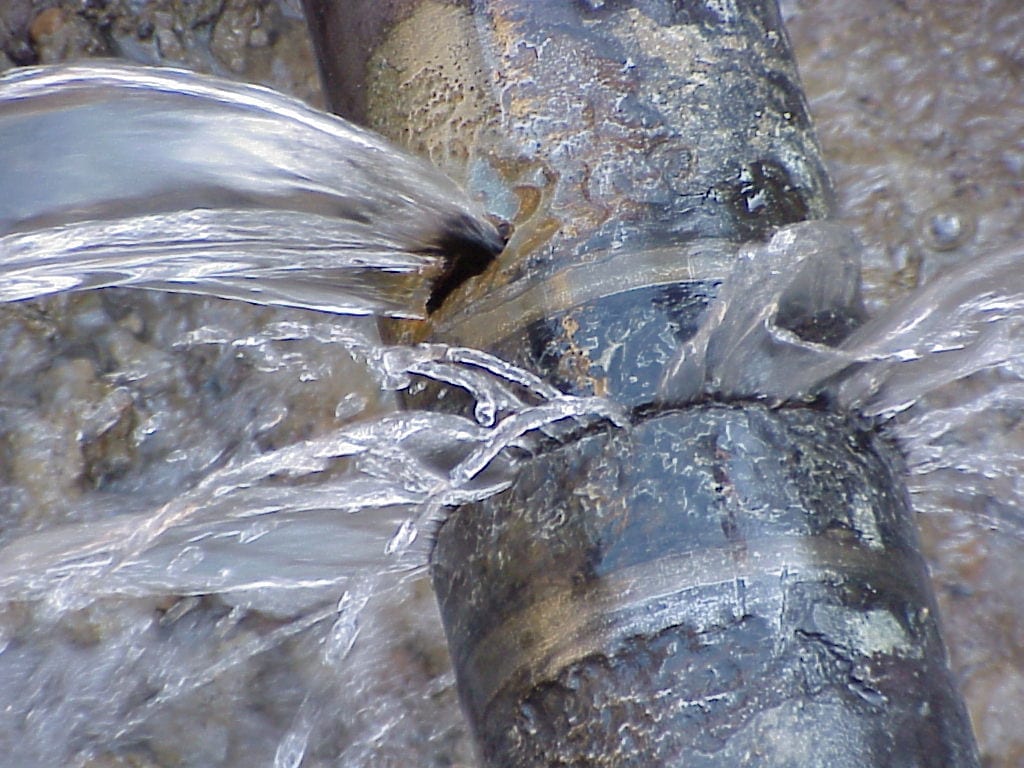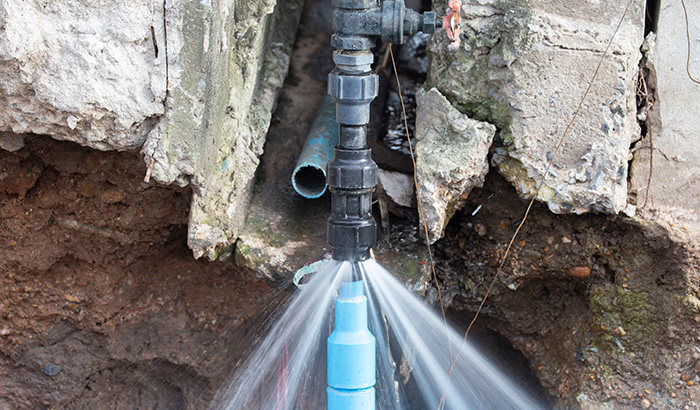What to Do When a Pipe Bursts: Immediate Steps for House Owners
A pipeline ruptured can be a property owner's worst nightmare, resulting in considerable damages if not resolved promptly. The prompt feedback is essential: initially, situate the source of the leakage and shut off the main water shutoff to avoid further flooding. Following this, draining the pipelines ends up being necessary to minimize added problems.

Examine the Circumstance
When a pipe bursts, the first step is to examine the circumstance quickly. This preliminary analysis is critical in determining the level of the damages and the prospective risks involved - burst pipe. Begin by recognizing the resource of the leak; this might involve inspecting the location around the burst pipe for visible indicators of water retreat. If the burst occurred in a concealed space, such as within a wall or under a floor, try to find water stains or merging that may suggest the place.
Inspect for electrical cables that may be subjected to water, as this positions a substantial risk of electrocution. Additionally, take note of any type of beneficial things or furniture that might be at threat of water damages.
Documenting the damage through pictures can additionally be beneficial, particularly for insurance coverage claims. Time is important, as standing water can lead to mold development and further structural damages. By extensively analyzing the situation, you will be much better prepared to take the essential actions to mitigate further problems occurring from the burst pipeline.
Shut Off the Water
The instant priority after determining a ruptured pipeline is to shut down the water to avoid more flooding and damage. Find the major shut-off shutoff, usually located near the water meter, in the basement, or on an exterior wall surface. Transforming this shutoff clockwise will stop the circulation of water throughout your home, minimizing the risk of substantial water damages.
If you are unable to find the primary shut-off shutoff or if it is malfunctioning, you might require to turn off individual valves linked to the impacted pipeline, if obtainable. Some homes also have secondary valves for certain devices, such as cleaning equipments or dishwashers.
It's a good idea to acquaint on your own with the place of these shutoffs before an emergency happens, as this understanding can conserve useful time throughout a dilemma. On the occasion that the primary valve is stuck or challenging to turn, do not require it; instead, consider seeking professional assistance.
Once the water supply is turned off, take a minute to analyze the scenario additionally while getting ready for the next steps, ensuring that your home is as secure as feasible from added water invasion.
Drain Pipes the Pipelines
After shutting down the supply of water, it is necessary to drain the pipelines to lessen any type of staying water that could lead to added damages. Begin by opening up all faucets in the home, starting from the highest degree to the most affordable. This process urges the water to drain completely, allowing gravity to help in why not find out more getting rid of recurring water from the pipes.

Beware when draining hot water, as it can cause burns. Allow the water to leave till the flow stops. Make use of towels or a damp vacuum to soak it up if you notice any continuing to be water merging. Correctly draining the pipes is essential to avoid more complications and aids safeguard your home from additional water damages during this demanding scenario.
Get In Touch With a Professional
Following a burst pipeline, calling a professional plumber is vital to make sure an extensive assessment and reliable repair work. Trying to handle the scenario without professional aid can result in more damage and difficulties. An accredited plumbing has the expertise and specialized tools necessary to recognize the origin of the leak and address it successfully.
When selecting a plumber, focus on those with a strong track record and relevant experience in emergency pipes solutions. Checking on the internet testimonials, obtaining references, and verifying credentials can assist you make an informed option. It is a good idea to contact several specialists to compare feedback times, approximated expenses, and solution offerings.
Once you have involved a plumbing, supply them with as much details as possible concerning the event, consisting of the area of the burst pipe and the actions you have actually currently taken. This information will Discover More help them in identifying the issue swiftly and accurately.
File the Damage
When a plumbing technician has actually been contacted and the immediate concerns dealt with, it is essential to document the damage triggered by the ruptured pipeline. This action is critical for both insurance cases and possible fixings. Begin look at this site by taking clear photographs of the affected areas, concentrating on visible damages to wall surfaces, flooring, and home furnishings. Make certain that photos capture various angles and distances to provide a thorough view of the scenario.
Following, put together a breakdown of damaged things, including their approximate value and any kind of appropriate acquisition info. This inventory must encompass long-term fixtures, personal belongings, and any type of architectural damage observed. Preferably, include the approximated cost of repair services based upon expert analyses or previous quotes for similar job.
In addition to visual and written documentation, keep documents of any communications with your plumbing professional and insurance copyright. This information will sustain your case and facilitate a smoother process for repair services. Be meticulous in your documentation efforts, as detailed records can considerably influence your capacity to receive compensation and speed up reconstruction initiatives. By taking these steps, you will be better prepared to navigate the after-effects of the case - burst pipe.

Conclusion
Immediate analysis of the situation, followed by shutting off the primary water supply, is critical. Draining pipes the pipes and documenting the damage guarantees appropriate handling of the occurrence for insurance policy objectives.
The prompt top priority after identifying a burst pipe is to shut off the water supply to prevent further flooding and damage. Turning this valve clockwise will stop the flow of water throughout your home, reducing the danger of comprehensive water damage.
After shutting off the water supply, it is essential to drain the pipes to reduce any remaining water that could lead to additional damages. For homes with a warm water heating system, you need to additionally drain pipes the storage tank by linking a pipe to the drain valve and routing the water right into an ideal container or exterior.
Appropriately draining the pipes is crucial to preventing more difficulties and aids secure your home from extra water damage throughout this difficult situation.